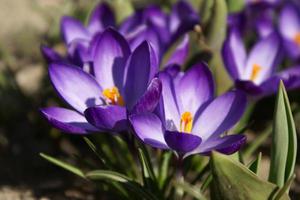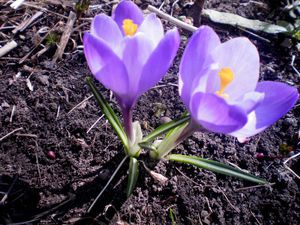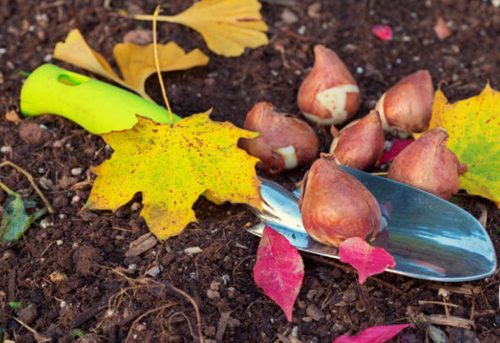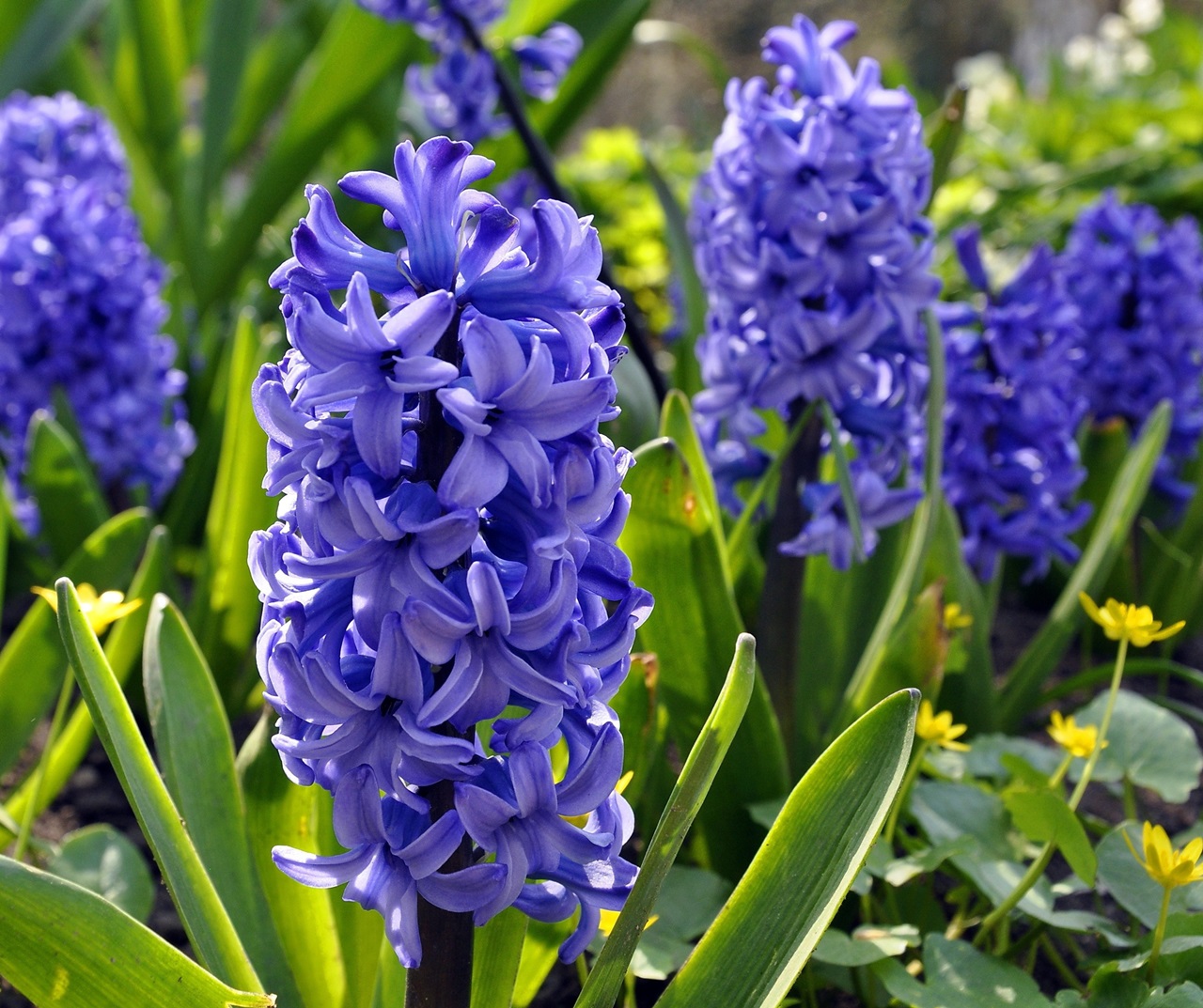What kind of plant is this? This is a delicate primrose that has attracted flower lovers for centuries with the beauty of its buds. Cultivation is carried out by forcing, which is the creation of favorable conditions for abundant flowering during a period when in nature it is at rest.
It is not difficult to care for them and, with a little effort, even a novice florist is able to make them bloom by a certain date. In order for the distillation of such a houseplant to be successful, it is necessary to carefully prepare them before planting the bulbs, plant them on time and subsequentlykeep at a certain temperature and humidity... Let's try to figure out how to properly grow crocuses in a pot at home, as well as how to care for this plant.
Growing principles
In order for crocuses to grow quickly, they should create conditions that are as close as possible to natural ones:
 Such a culture loves well-lit places, so it is advisable to install the pot on the south side of the house, where there is a lot of sunlight.
Such a culture loves well-lit places, so it is advisable to install the pot on the south side of the house, where there is a lot of sunlight.- The soil must be drained. Stagnant moisture in the soil contributes to rotting of the bulb. Coarse river sand and gravel are used as drainage.
- Water the plant sparingly, but regularly. During the rest period, this should not be done and it is also not necessary to spray the onion.
- Flowers do not like acidic soil, so loams that do not retain moisture should be chosen.
- When replanting, only fresh soil should be used, which may consist of leafy and soddy soil, as well as clean sand. It is recommended to add a small amount of mineral supplements, which include phosphates and potassium.
- The normal temperature for growing crocus should be 18 - 20 degrees, and in winter, the bulbs are placed in a cool room with a temperature not higher than +10 degrees.
Features of distillation
To grow a plant and achieve abundant flowering at a certain time, you need to know some nuances. Forcing process consists of the following stages:
- selection of planting material;
- cooling;
- rooting.
Let's consider them in more detail.
The choice of planting material
To grow crocuses in pots, you should choose the right planting material. There are a large number of species and varieties of this crop, but not all of them are capable of blooming indoors. Natural varieties are little decorative, because their flowers are small and inconspicuous. Chrysanthus hybrids quite moody and require special care, their buds often dry up without even blooming.
It is best to grow large-flowered Dutch hybrids at home, which delight with large showy flowers. Regarding the choice of a certain variety, it is necessary to focus on the expected flowering period.
The size of the corm is of great importance, and for forcing its diameter should not be less than 5 cm. Planting material sold in stores is usually sorted not by diameter, but by circumference. For cultivation, corms are required starting from size 7/8, this allows you to get a single flower.Sizes 8/9 guarantee that 2 - 3 flowers will grow from one bulb, and at a size of 10 or more you can expect up to 5 - 6 pieces. In this case, large planting material usually blooms earlier.
The finest quality bulbs are on sale from mid-August to early September, that is, at the beginning of the season. It should be noted that caring for any crocus variety will be almost the same.
Cooling
 In order for the flower to bloom ahead of schedule, for this it is necessary to artificially create conditions that will be as close to natural as possible. In this case, the corms should be cooled and rooted for at least three months.
In order for the flower to bloom ahead of schedule, for this it is necessary to artificially create conditions that will be as close to natural as possible. In this case, the corms should be cooled and rooted for at least three months.
If a crop is grown from a garden plot, then the bulbs should be dug up in June, after which they are dried and sorted, choosing the largest and healthiest, and then laid for storage. For the first week, they are stored at a high temperature, which can reach +34 degrees, then gradually reduce it to +20 degrees.
After two weeks, the temperature must be lowered by a few more degrees, and it is maintained at +17 degrees until approximately the second half of August. Then the cooling process begins, which should be carried out in a dry and dark room at a temperature of +4 to +9 degrees. In an apartment, the best place for this is a refrigerator, which ensures a stable temperature.
Some people use glazed loggias for these purposes, but due to temperature fluctuations that are caused by external factors, the planting material may deteriorate. If cooling is carried out in the refrigerator, then the bulbs can store in thick paper and do not plant in the ground for up to a month.
Purchased bulbs are usually well dried and stored at high temperatures, but they should still be refrigerated. So that they can adapt, they are kept in a room for several days, after which they are placed in a refrigerator.
Blooming rooting
- The cultivation of the culture is carried out in shallow and wide pots, and if several bulbs are planted in one container, then they should not come into contact with each other.
- Usually, a thick layer of sand is first placed in the pots, followed by a layer of soil. This ensures good drainage and root nutrition.
- Sometimes the tip of the bulb is left on the surface, but usually it is completely buried in the ground.
- After the bulbs are planted in pots, they are taken to a dark room, where they are left for 2 months.
- At this time, the bulbs give roots, and the rooting process begins. The first green shoots should be expected shortly thereafter.
- When the sprouts are 3 to 5 cm tall, the crocus should be brought out into the light, where it continues to grow at a temperature of 10 to 15 degrees.
It is quite simple to take care of overgrowths, but if you know certain nuances and subtleties, then you can achieve not only their abundant flowering, but also wait for the buds to appear by a specific date.
Crocus: home care
 You should know that if the temperature in the room is above +20 degrees, then this culture fades rather quickly, in a few hours, while losing its decorative effect. Also, excess lighting affects them in a negative way, which is why the buds bloom very quickly and immediately wither. Moreover, it can be both sunlight and bright incandescent bulbs.
You should know that if the temperature in the room is above +20 degrees, then this culture fades rather quickly, in a few hours, while losing its decorative effect. Also, excess lighting affects them in a negative way, which is why the buds bloom very quickly and immediately wither. Moreover, it can be both sunlight and bright incandescent bulbs.
In order for the crocus to bloom as long as possible, it protect from direct sunlight and kept at a temperature of 14 - 16 degrees. Due to this, some varieties can remain decorative for up to three weeks.
After distillation, the culture usually does not bloom a second time, so it is either thrown away or planted in a summer cottage, where after a certain time new children appear. Re-distillation is carried out only if the bulb is well preserved.
Caring for reused plants has its own characteristics.They should also be planted in a nutritious soil, fed twice, before growth and after flowering, using potash or ammonium nitrate for this. Water is poured only into the pan so that the water level is a few centimeters below the bottom of the bulb. it protects it from decay... Watering when caring for crocuses stops after the leaves turn yellow and fall off. In September, the culture is transplanted into a fresh substrate and the process begins anew.
Thus, growing and caring for crocuses is not too troublesome, and if properly distilled, such a crop can bloom at a certain time. There are many varieties of this plant and several pots with different types will allow you to create an interesting decorative composition at home.


